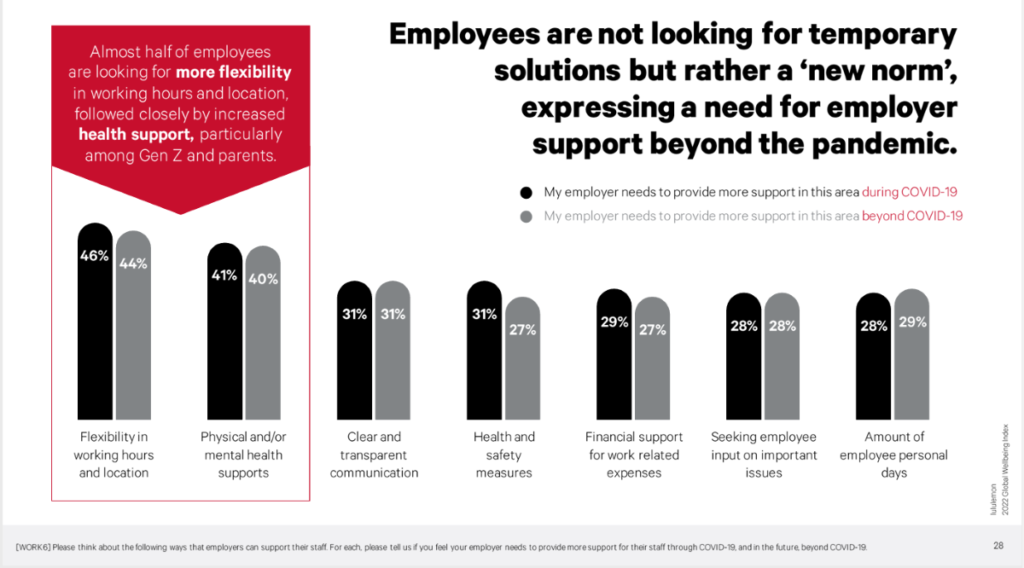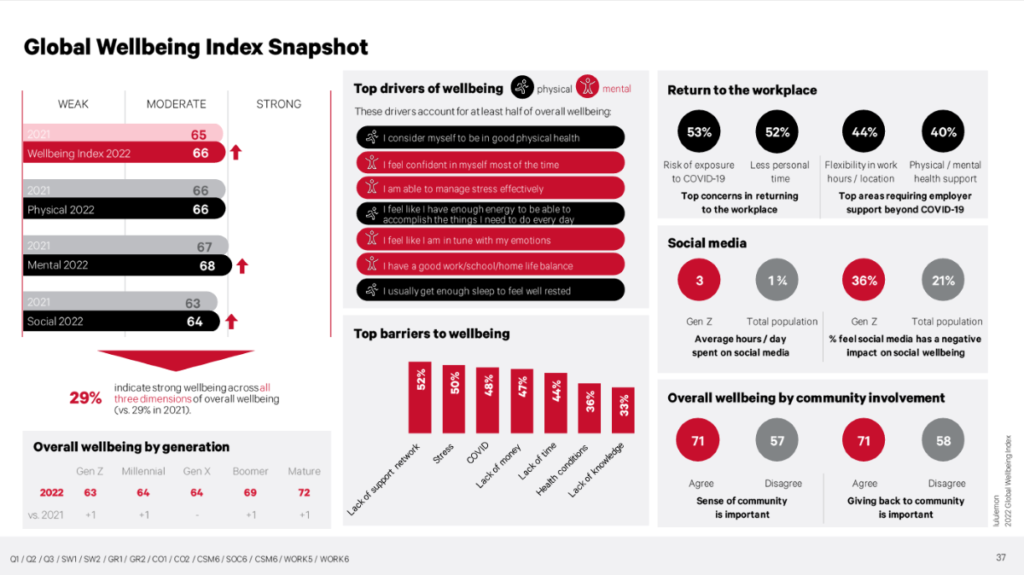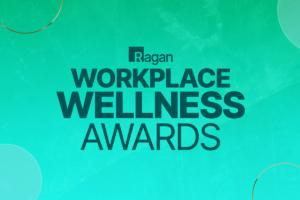Survey: Social well-being lags other markers of employee health
The study from athletic apparel retailer Lululemon directly links rising well-being to a return to pre-pandemic activities, including a return to the workplace.

The second annual “Global Wellbeing Report” from Lululemon Athletica Inc. is the company’s effort to offer a snapshot of global well-being and identify what drives wellness. The study took place in fall 2021 and included responses from 10,000 general population adults—1,000 within 10 global markets.
The Global Wellbeing Index—based on how global respondents rated their physical, mental and social dimensions of well-being—rose by one percentage point from the previous year to 66%. This increase the report attributes to respondents indicating improved mental wellness since last year, linking it to an uptick in use of coping strategies around the COVID-19 pandemic.
Social well-being, defined by the study as “feeling connected to others and part of a supportive community,” also saw a one-point increase from the previous year, but remains the lowest ranked wellness area.
Well-being rises for in-person work

Well-being ranks three points higher for those respondents who will be soon or already have returned to the workplace full-time compared to those returning part-time and six points higher than those who report they will not be returning to a workplace.
The report found that 86% of respondents who shifted to working from home during the pandemic experienced “negative employment-based impacts,” including a decline in work-life balance and increased workload.
But when thinking about a return-to-office, 53% of respondents expressed concern around the risk of exposure to COVID-19. Fifty-two percent indicate concern around having less personal time, which ranked much higher among Gen Z respondents (69%).
When it comes to workplaces, the data suggest employees now want long-term changes to be implemented by their employers.
The struggles of Gen Z and more

Here are additional takeaways from the Global Wellbeing Report:
- Holistic well-being—those who feel well across physical, mental and social dimensions—remains static year-over-year, with 29% reporting “strong well-being.” Gen Z ranks 8% lower than the general population on holistic well-being (21% report “strong well-being”) due to lower mental and social wellness. Notably, 68% of Gen Z indicates stress is a barrier to their well-being, and 53% cite increased levels of loneliness.
- The lack of a support network—defined as “connecting with people of similar opinions, joining virtual groups relating to interests, and access to physical or mental health services and resources”—is a top barrier globally to well-being, according to the study. This barrier is especially present for the Latino community, Gen Z, individuals with health conditions, members of the LGBTQ+ community and parents with children younger than 6.
- Social media both helps and hurts respondents’ well-being, and time appears to be the differentiator. Fifty-three percent find social media sites and messaging apps help them feel connected to family and friends, but those who spend three or more hours on such platforms indicate some negative effect on their social wellness.
- A sense of belonging to a community is one of the drivers of social well-being, according to 52% of the survey’s global respondents. Those who indicate a sense of community and are able to give back to it (volunteering, donating financially, etc.) are more likely to report stronger levels of well-being overall.
For more around workplace wellness and an employee-centric approach, explore this conversation with Jonathan Gelfand.
COMMENT
Ragan.com Daily Headlines
RECOMMENDED READING
Tags: Gen Z, holistic wellness, Lululemon Athletica Inc., report, return to workplace, social well-being, well-being






